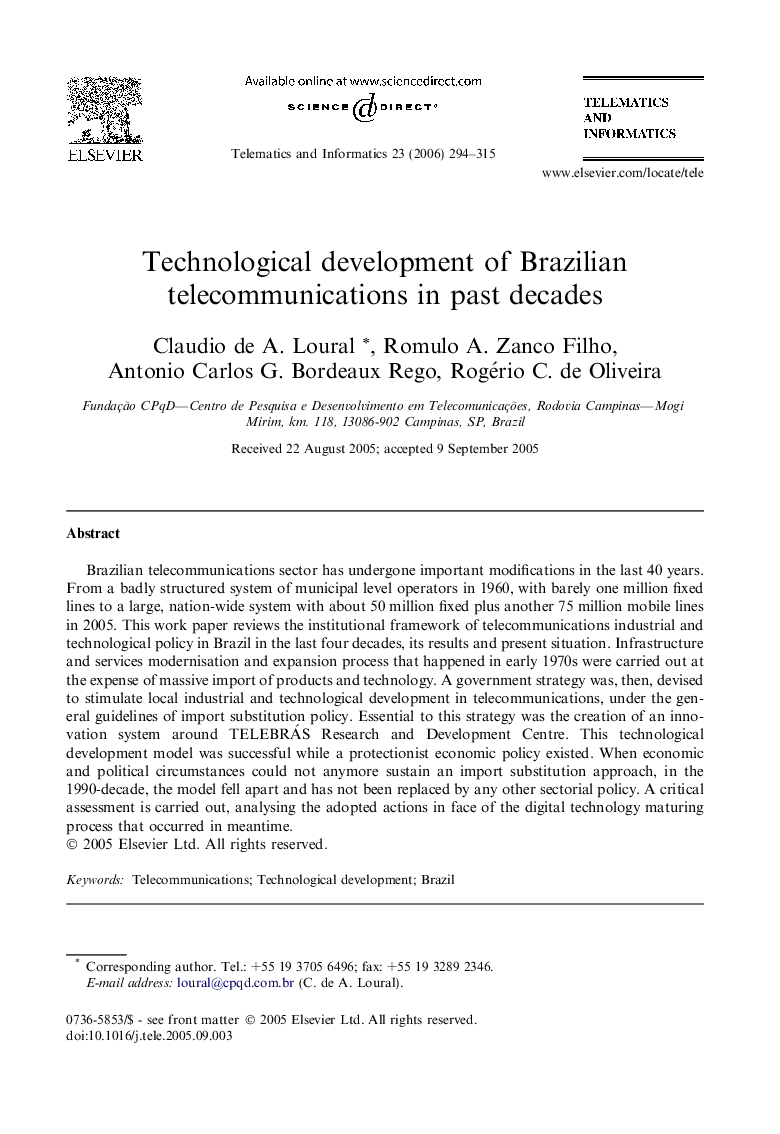| Article ID | Journal | Published Year | Pages | File Type |
|---|---|---|---|---|
| 466149 | Telematics and Informatics | 2006 | 22 Pages |
Brazilian telecommunications sector has undergone important modifications in the last 40 years. From a badly structured system of municipal level operators in 1960, with barely one million fixed lines to a large, nation-wide system with about 50 million fixed plus another 75 million mobile lines in 2005. This work paper reviews the institutional framework of telecommunications industrial and technological policy in Brazil in the last four decades, its results and present situation. Infrastructure and services modernisation and expansion process that happened in early 1970s were carried out at the expense of massive import of products and technology. A government strategy was, then, devised to stimulate local industrial and technological development in telecommunications, under the general guidelines of import substitution policy. Essential to this strategy was the creation of an innovation system around TELEBRÁS Research and Development Centre. This technological development model was successful while a protectionist economic policy existed. When economic and political circumstances could not anymore sustain an import substitution approach, in the 1990-decade, the model fell apart and has not been replaced by any other sectorial policy. A critical assessment is carried out, analysing the adopted actions in face of the digital technology maturing process that occurred in meantime.
